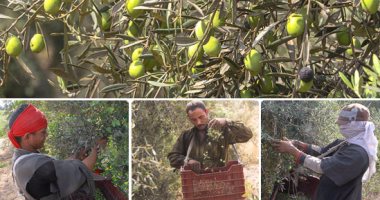Awareness programs on methods of irrigation, fertilization and control of olive pests to increase production

The Central Administration of Horticulture and Agricultural Crops continued its guidance campaigns and programs to raise awareness of the fields, issue technical recommendations bulletins to increase olive crop production during the current period, and apply good practices in agriculture, methods of irrigation, fertilization and pest control.
According to the Horticultural Crops Report, one of the most important good practices to follow the olive harvest is to remove weeds outside the farm, paint the logs with plastic to protect the trees from the sun, increase the number of points as the age of the trees to provide appropriate moisture.
The report added that one of the most important ways of fertilizing the olive crop is the trees that are irrigated with drowning, adding 100-150 g of manure or nitrate nitrate, adding 150 g fertilizer for less than 3 years and 300 g of trees for more than 3 years, adding 150 g sulfate Potassium for small trees and 300 g for large trees and repeat every 15 days.
And the trees that are drip irrigation: First Add: 2 kg Sodium sulfate + 1/2 kg Magnesium sulfate, second irrigation: add 3 kg Compound fertilizer 19-19-19, third irrigation: add 3 kg potassium sulfate, fourth irrigation: Add 1 L Amine acid per feddan for one month + 2 liters of humic acid once a month + 1 liter of phosphoric acid once every 15 days.
On the other hand, the small elements are sprayed with 300 gm + 150 gm + 150 g manganese + 75 gm + 50 g borax + 200 g urea, irrigation (l / day / tree), irrigation (l / day / tree) Trees / Quantity in liters during May First year / 20 liters, second year / 22 liters, third year / 25 liters, fourth year / 25 to 30 liters, year five / 40 to 55 liters, more than six years / 55-70 liters.
Related topics
(t) Olive gardens (t) Olive fertilization (t) Olive trees (t) Horticultural crops (t) Agricultural crops
Post a Comment